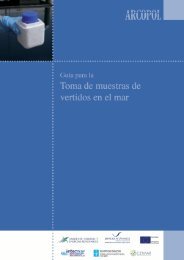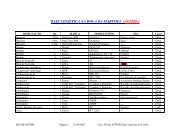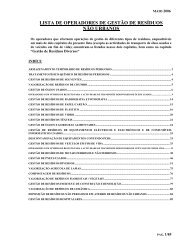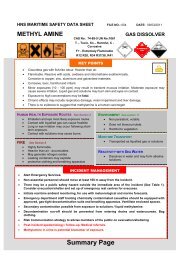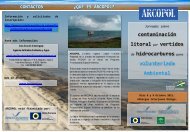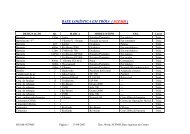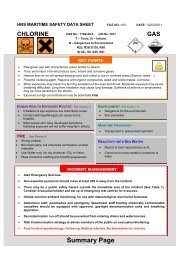ammonia gas (d) - Arcopol.eu
ammonia gas (d) - Arcopol.eu
ammonia gas (d) - Arcopol.eu
You also want an ePaper? Increase the reach of your titles
YUMPU automatically turns print PDFs into web optimized ePapers that Google loves.
HNS MARITIME SAFETY DATA SHEET FILE NO.: 003 DATE: 09/03/2011AMMONIACAS No: 7664-41-7 UN No: 1005F- Flammable, T – Toxic, C - Corrosive,N – Dangerous to EnvironmentR10, R23, R34, R50S(1/2), S9, S16, S26, S36/37/39, S45, S61GAS (D)Important Notes• Ambulance staff, paramedics and emergency department staff treating chemicallycontaminated casualtiesshould be equipped with Department of Health approved, <strong>gas</strong>-tight (Respirex) decontamination suitsbased on EN466:1995, EN12941:1998 and prEN943-1:2001, where appropriate.• Decontamination should be performed using local protocols in designated areas such as adecontamination cubicle with adequate ventilation.• Secondary contamination may occur.Dermal exposure• Remove patient from exposure.• The patient should remove all clothing and personal effects.• Double-bag soiled clothing and place in a sealed container clearly labelled as a biohazard.• Wash hair and all contaminated skin with copious amounts of water (preferably warm) and soap for atleast 10-15 minutes.• Decontaminate open wounds first and avoid contamination of unexposed skin.• Pay special attention to skin folds, axillae, ears, fingernails, genital areas and feet.• Burns totalling more than 15 % of body surface in adults (>10 % in children) will require standard fluidresuscitation as for thermal burns.• Cover affected area with a clean non-adherent dressing.Ocular exposure• Remove patient from exposure.• Remove contact lenses if necessary and immediately irrigate the affected eye thoroughly with water or0.9% saline for at least 10-15 minutes.• Patients with corneal damage or those whose symptoms do not resolve rapidly should be referred forurgent ophthalmological assessment.Inhalation• Remove patient from exposure. Ensure a clear airway and adequate ventilation.• Give oxygen to patients with respiratory symptoms.• Apply other supportive measures as indicated by the patient’s clinical condition.Ingestion• Ensure a clear airway and adequate ventilation.• Give oxygen to symptomatic patients.• Do not attempt <strong>gas</strong>tric lavage or give n<strong>eu</strong>tralising chemicals as heat produced during n<strong>eu</strong>tralizationreactions may increase injury.• Apply other measures as indicated by the patient’s clinical condition.PAGE 8 OF 11



